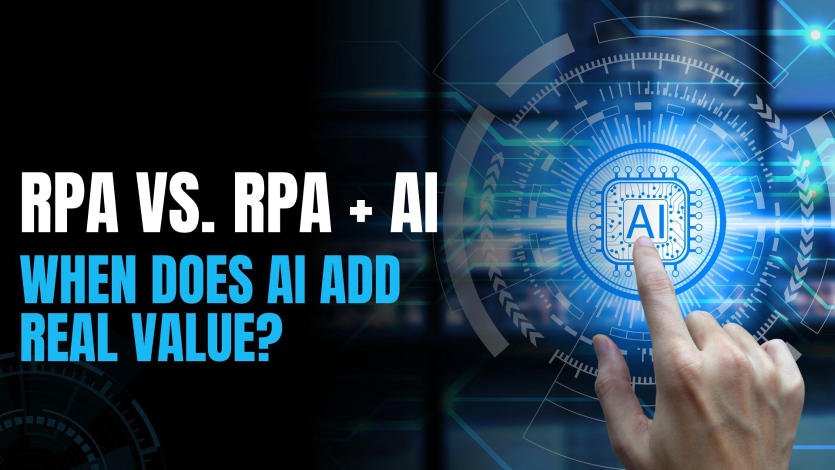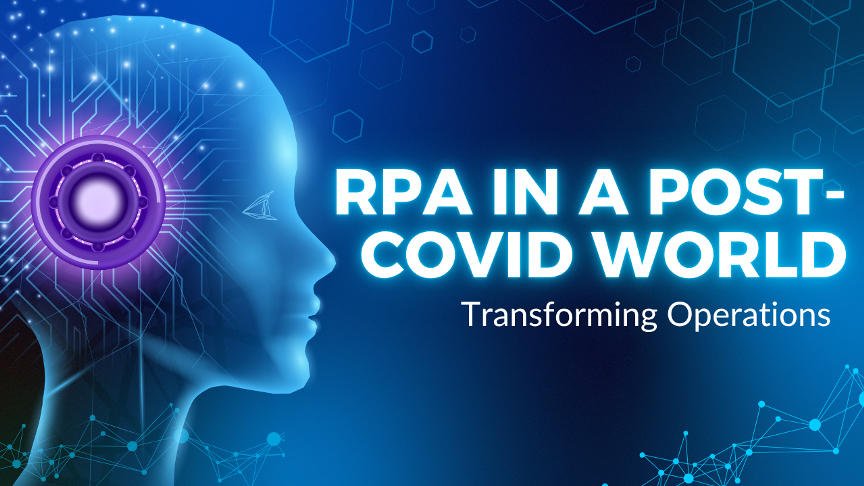As we have entered the era of rapid technological advancement, traditional financial institutions face escalating strains to provide seamless customer journeys, maximize operational efficiencies, and comply with myriad regulatory pressures whilst remaining competitive. New innovations and developments are happening every day but a particular technology that is changing the face of traditional banking and financial services is web automation services.
Through the implementation of AI automation and AI chatbot services, banks have discovered new ways to optimize operations, reduce costs, and automate personalized customer interactions.
Why Financial Services Must Embrace Digital Transformation
This combination of aging legacy systems and manual processes has served financial institutions well for decades. With increasing competition and soaring customer expectations, banks need to reimagine and undergo digital transformation in their operations. At the core of this evolution is automation—not just of individual processes, but of end-to-end workflows.
Recent statistics show that the financial industry’s effort to automate has reduced processing times for some services by as much as 80%, and also achieved savings in operational costs of up to 30% in key areas such as compliance and transaction processing. After a huge transformation in data handling processes and analysis, web automation services are now the foundation for any bank that wants to win the competition.
What is Web Automation Services
Web automation services are automated software solutions that utilize web interfaces, systems, or APIs to perform numerous tasks that normally would require human intervention. They are an evolution from traditional scripting methods—using advanced techniques like Robotic Process Automation (RPA), machine learning, and natural language processing (NLP). These services enable banks to:
- Automate repetitive tasks: Including data entry, account reconciliation, file sharing, report generation, and others.
- Enhance data accuracy: With the elimination of human error found in manual entry and processing.
- Speed up processing times: Allowing near real-time transaction processing and customer onboarding.
- Improved regulatory compliance: Via continuous monitoring, alerts, and automated report generation.
For example, banks that leverage web automation have shown up to 80% faster processing time for customer onboarding, turning a paperwork-heavy process into something that can be finished quickly.
Understanding the Impact of Artificial Intelligence Automation on Finance Workflows
Web automation services are essential by themselves, but now that they are being combined with AI automation, these services are scaling to a whole different level. Artificial Intelligence (AI) Automation denotes the execution of various tasks using intelligent systems that make data-driven decisions. The combination of RPA and AI enables businesses to automate complex processes like:
- Automation in Fraud Detection: Deploying machine learning models to uncover and mark suspicious activity on the go.
- Risk Management: The ability to modify risk parameters in response to real-time financial information and market trends.
- Loan Processing: Everything from credit scoring and document validation to personalized risk assessments is automated.
For instance, certain global banks have implemented AI automation into their loan processing systems, resulting in the average loan approval time being shortened from days to minutes. Diversity in decision-making and the ability to process large datasets improves AI automation, which in turn leads to both efficiency and profitability.
How to Use AI Chatbot Solutions for Improving Customer Experience
In an economy where customer interaction matters as much as it did before, AI chatbot services are at the cusp of digital engagement. These state-of-the-art chatbots use advanced natural language processing (NLP) and generative AI to respond to customer requests, as well as carry out complex, defined jobs. For example, when a customer logs into their online banking: an AI chatbot can:
Identifying yourself is the first step.
- Use transaction data to provide personalized financial advice.
- Autonomously execute fund transfers and process transactions.
- Schedule appointments with human advisors when the needs are more complex.
Banks have also mentioned that the response time for customer queries has been reduced by 70% when AI chatbot services are launched, which has improved customer satisfaction to a great extent.
The list goes on and on, but one of the key advantages is that chatbots can also work round the clock — Customers don’t have to wait and get a response immediately regardless of whether it is day or night. Its ability to be continuously available fosters loyalty and enables banks to manage a much higher volume of customer interactions without an accompanying increase in staffing costs.
The Interconnectedness of Web Automation and AI Technologies
It is this harmony between web automation and AI solutions that provides a real and supreme power of modern digital banking. Banks are not just reducing manual tasks, but they are also redefining entire workflows, when it comes to web automation services augmented with AI automation and along with AI chatbot services. Below here are some key integration outcomes to consider:
1. Streamlined Operations
Financial institutions can shift precious man hours from mundane tasks to strategic tasks by automating processes that are very often popularised such as KYC and compliance checks which are done on the initial stage. According to some studies made by different organisations,those banks which are using integrated technologies are achieving productivity enhancements by as much as 50% and more, which reduces operational risks.
As an illustration, various automated KYC (Know Your Customer) processes enable bots to harvest and collect data & information from multiple modes, repositories, cross-reference them against regulatory databases, and flag mismatches for further examination. Not only does this reduce compliance risks, it also accelerates more accurate customer onboarding processes.
2. Enhanced Decision-Making
Using AI automation, systems can process large volumes of data at a high speed to facilitate in-time and dynamic decision-making processes such as credit and investment decisions. As machine learning algorithms continue to make these models more accurate, banks can offer personalized financial advice that changes with both market conditions and individual customer behavior.
According to an internal report of a leading financial services provider, the integration of decision-making platforms powered by AI can result in up to 15% and more increment in its accurate loan approvals, diminishing defaults and enhancing asset quality.
3. Cost Efficiency and ROI
By eliminating manual intervention and errors, advanced web automation augments AI technologies to substantially lower the cost-to-income ratio (CIR). It is a forecast that bank annual spending on generative AI and agentic AI will skyrocket, from $5.6 billion in 2024 to nearly $85.7 billion by 2030. Such explosive growth is a testament to the huge financial benefits and efficiency gains these technologies are set to drive.
For a large financial institution, even a 3% reduction in operating costs through increased automation and integration of AI can mean millions and billions on an annual basis. These efficiencies not only translate to profitability but also into a scalable model for future growth.
4. Compliance with Regulations and Reduction of Risks
In a heavily regulated industry compliance is complex and must be constantly monitored. Using web automation services combined with AI automation will be able to monitor transactions and processes continuously to ensure every process follows compliance standards. Automated reporting functions also help simplify data compilation for audits, significantly easing the burden on compliance teams.
An AI-powered solution for regulatory reporting, for example, could automatically generate audit trails and flag potential areas of non-compliance — reducing the risk of penalties and enhancing the institution’s reputation for transparency and governance.
Case Study in Integration: Banking of the Future Is Here
For instance, one of the biggest global banks used web automation services, AI chatbot services, and AI automation together in an integrated way to revamp its customer onboarding process. Before this change, the onboarding process was manual, requiring human input to enter data, verify documents, and perform compliance checks. The manual process used to take several days, which annoyed customers and escalated operational costs.
The Transformation Process
Data Extraction and Validation: The bank decided to use web automation services to extract data from internal and external corporate systems, including regulatory databases. Intelligent bots were used for automatic extraction of data from customer forms followed by real-time validation of the same. Automation was the key to ensuring 100% accuracy, thus significantly reducing manual workload.
AI Chatbot as Customer Interface: Once data validations were done, an AI Chatbot handled the communication with the customer. The chatbot answered questions, shared real-time updates on the status of the application, and walked customers through additional documentation as needed. This interaction relied on state-of-the-art NLP algorithms that made the experience as humanlike and intuitive as talking to an advisor.
Dynamic Compliance Checks and Risk Assessment: This process is now accompanied by AI automation, and the bank implemented systems to continuously monitor the dynamic compliance checks to track all transactions and steps taken throughout the process. Customer data was analyzed as repetitive numbers based on historical trends and risk factors by machine learning models so that automatic adjustments could be made and anomalies could be flagged proactively.
End-to-end Orchestration: A workflow orchestration engine ensured all steps of the process were orchestrated efficiently. The optimal system efficiency was retained, from data ingestion to customer engagement and up to final approval. For example, an occasional mention of our comprehensive resource on RPA vs Traditional Automation: Key Differences and Benefits—provided staff context around the changing benefits of automation technologies.
The Results
- Reduced Processing Time: The onboarding process was reduced from a couple of days to less than 30 minutes on an average.
- Cost Savings: The bank experienced a high operational cost savings of around 35%, and employee morale improved as the team could devote time to high-value tasks.
- Customer satisfaction: The customer service feedback score has improved gradually by nearly up to 50%, which shows the power of combining personalization with speed and efficiency.
SEO Optimization and Content Marketing Strategies
As many posts are published daily on Google by different means. So, to rank in search engine results, any article like this needs good keyword integration and SEO rules. A good understanding of this field is very very compulsory in this competitive world of digital marketing. If you are interested in following what is being taught:
Keyword Density: The main focused keyword, “ Web automation services,” has been used naturally throughout the content. Secondary keywords like “AI chatbot services” and “AI Automation” also appear regularly in the appropriate sections. Maintain a good ratio of keywords in the content.
Fluidity: The article implements keyword mention in a non-spammy way, meaning each use enhances the story. It employs variations and related ideas (like “intelligent automation” and “customer engagement”) to diversify the content.
Internal Linking: We added one link to “RPA vs Traditional Automation: Key Differences and Benefits” to add more context about legacy approaches vs more modern automation for readers looking for a comparison.
Data & Statistics: This post contains up-to-date statistics and financial predictions to help lend credibility to its claims. With AI spending set to skyrocket (projected to hit almost $85.7 billion by 2030), these stats motivate the need for digital transformation in a world that is far outpacing its current transformation.
Readability and Structure: Don’t use large paragraphs; rather, use bullet points, subheadings, and real-world examples to improve the readability and engagement rate of the article. It helps people who have busy lives to quickly understand the main points by providing a format that makes scanning easier.
Call-to-Action (CTA): The report ends with a call to action for banks and financial institutions to consider investing in integrated automation solutions. This can really help readers assess their operations now and how web automation and AI integration can deliver high ROI.
Web Automation and AI for Financial Services: Future Trends
As we look into the future, the unification of web automation services, AI automation, and AI chatbot services will continue to evolve in the banking industry. As technology evolves:
- Hyper Automation Solutions: The combination of various technologies, such as advanced RPA, AI, and workflow orchestration, will result in hyper automation — a scenario where almost all manual tasks are automated, paving the way for innovation and strategic initiatives.
- Enhanced Personalization: With the constant developments in machine learning, banks will have the ability to create more personalized experiences. AI systems are likely to analyze real-time data from several channels (web, mobile, social media) to provide individual, personalized financial advice and product recommendations.
- Real-Time Data: The integration of legacy systems into evolving platforms has always been a challenge. Future implementations will, without a doubt, be focused on the creation of unified data ecosystems to guarantee frictionless interoperability between archaic and contemporary systems, thus further tapping into the capabilities of web automation services.
- Ethical and Transparent AI: As the autonomy of AI grows, transparency and ethics will be at the impressive front. Financial entities will need to implement frameworks that guarantee AI-motivated choices are explainable and free from bias. This ensures compliance with evolving regulations and cultivates trust with customers who prioritize data protection.
- ROI-Driven Investment: As automation plays an ROI-driven role in saving costs or improving operational efficiency, banks are likely to dedicate an even bigger share of their technology budgets to digital transformation in the coming years. The growth curve of AI spending suggests convincingly that those who act early will gain not just technical advantages but also meaningful financial returns.
Conclusion
Web automation services, AI Chatbot services, and AI Automation are driving the transformation of the future of banking. Financial Services AI, ML, and Scalable ArchitectureI Train financial institutions with digital tools pcc their operations.
As illustrated by this article, the transition from traditional, manual processes to intelligent, automated workflows has already been able to produce massive outcomes. Banks investing in digital transformation will realize dramatic reductions in processing times and cost efficiencies and an unprecedented capability in the ability to engage with customers in a personalized way.
The blend of AI and web automation empowers not only smoother day-to-day operations but also opens up completely new streams of revenue and affirms regulatory compliance. With forecasts of skyrocketing AI investments in the coming years, if banks take decisive action, they won’t just survive but thrive in the digital age.
Every institution, even housing a single dollar in a customer account, is one click away from obliteration unless they re-conceptualize their interactions — via integrated web automation and AI solutions — as deeply as they are willing to go to enact lasting change. Adopt the future, make your workflows easier, and take your customer service to the next level.




